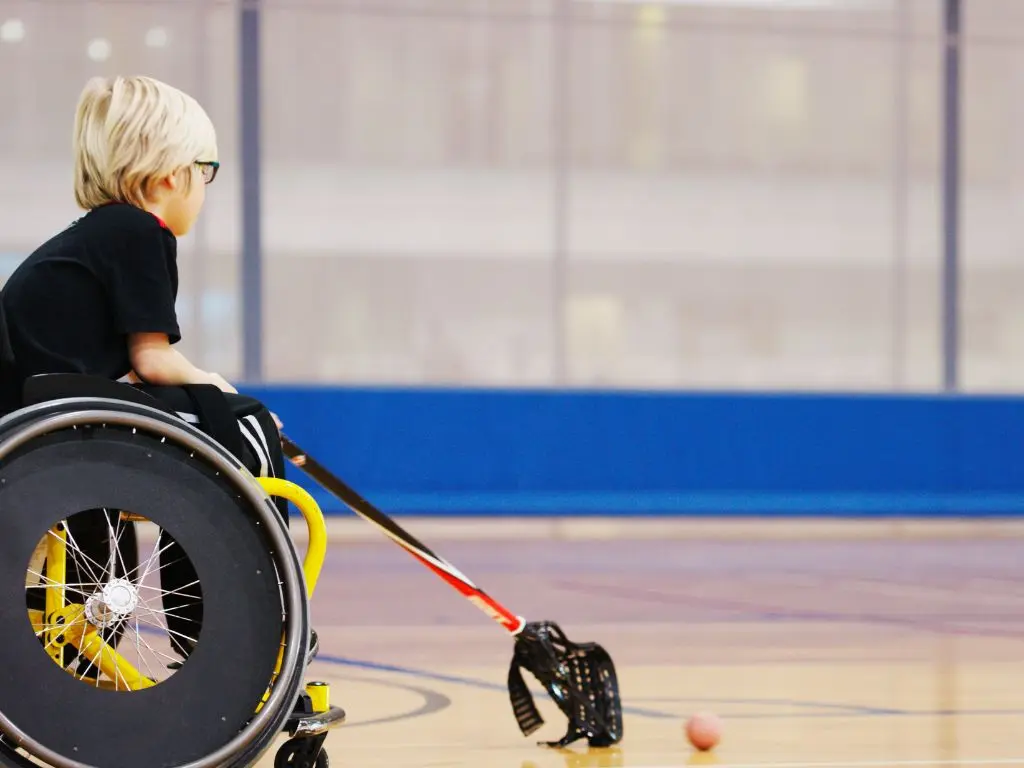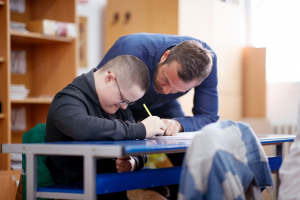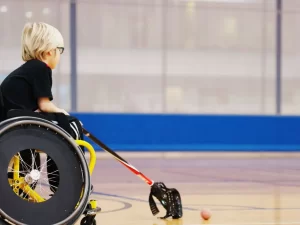Being active has massive benefits for children. For a child living with a disability, physical activity is even more valuable for their long-term well-being, enhancing not just physical but also social and emotional health.
Adults with a disability are more likely to report health issues. Being active from a young age can help reduce the risk of developing chronic health conditions, as well as improving:
- Strength
- Mobility
- Motor skills
- Cardiovascular fitness
- Sleep habits
- Overall immunity
There are also numerous mental and emotional benefits – from boosting confidence and independence to developing better concentration and memory skills.
How active should my child be?
‘Active’ looks different for everyone.
There are three levels of physical activity relevant to this article:
- Light physical activity: No noticeable change to your child’s breathing or heart rate. This could be a leisurely wander.
- Moderate physical activity: Your child will be huffing and puffing a bit. Think brisk walking, wheelchair wheeling, dancing, or swimming.
- Vigorous physical activity: Increased heart rate and a lot of huffing and puffing. This might be from dancing, cycling or hand cycling, team sports.
The Australian Government’s Department of Health recommends children and young people (aged 5-17) should aim for at least 60 minutes of moderate to vigorous activity per day, with some of this also involving activities to strengthen muscles and bones.
Note: These are general guidelines for age-based activity. You should always seek guidance from your child’s healthcare professional about what may be best for them.
Leading by example
Kids love to do what mum and dad are doing. If you lead an active lifestyle, chances are they will want to do the same.
Easy ways of incorporating activity into your family’s life:
- Dancing around together
- Going for a lap around the block
- Playing to develop ball skills
- Mirroring movements (a game of Simon Says, for example)
This can be a good starting point to practise basic sports skills together, like throwing or catching. You can also use this informal, play-based activity to discover what your child might be interested in as a sport.
Involving your child’s care team
It’s important to challenge limits and assumptions as your child continues to develop. Before delving in, however, you should discuss your child’s sporting aspirations with their care team.
Health professionals like physiotherapists, occupational therapists or exercise physiologists can determine if any movements need to be avoided, so the activity or sport can be adapted to accommodate this.
To help get your child active, they may assist with:
- Participation pathways
- Skill development
- Risk assessment for activities
- Determining supports or adaptations for play
- Suggesting sports or activities suited for your child
Discovering the sports available
Each state has their own resources for finding and participating in accessible sports. You can find your local organisations through Disability Sports Australia:
- Abilities Unleashed Programmes are connecting kids living with a disability to local sports and recreation activities.
- Explore the larger network of Australian organisations via the Get Active resources.
In terms of grassroots organisations (the local footy club or soccer team), you will likely need to contact them individually.
Many sporting organisations provide modified versions of sports in junior programs, but you will need to check if an individual organisation or sport is suitable for your child’s specific needs.
A helpful resource for communicating your child’s important information to coaches or teachers is the AllPlay About Me summary form.
Note: Some sports or categories within may have specific eligibility requirements. Be sure to do your research and be aware of the criteria, to avoid disappointment later.
Encouraging effort over outcome
One of the great things about sport is the opportunity to show kids that it’s not all about winning and losing. Being a good sport can translate to their resilience and behaviours in other parts of life, as it teaches children how to respond when things don’t go the way they wanted.
Focus on the game, not the outcome. Acknowledge your child’s efforts in practising and participating. Instead of talking about the result of the game, you can say things about their experience like:
- Did you have fun?
- What was the best part for you?
- I’m proud of you for giving your best effort today!
Encourage your child to develop a Growth mindset
Encouraging your child to develop a growth mindset (as opposed to a fixed mindset) can help them understand that results can be achieved through work and patience, and trying their best is the most important part. A growth mindset may also help kids enjoy a sport longer as it can stop frustration from mounting.
Children with a fixed mindset believe their skills and abilities are ‘fixed’ and cannot be changed. This child may believe that if they cannot do something perfectly well, they won’t try, or they simply give up after a setback because they think they can’t improve. They might say, ‘I can’t do this very well’. Conversely, a child with a growth mindset says, ‘I can’t do this very well, yet’ – with ‘yet’ being the signal that they know they can improve with deliberate practice.
For more on the differences between growth and fixed mindsets, see Carol Dweck: A Summary of Growth and Fixed Mindsets.
Finding sports role models for your child
Picking a team or athlete in a sport your child is interested in can be a great way to show a growth mindset in action. Elite athletes all have stories of resilience and overcoming barriers, which can be very inspiring for the next generation.
With the 2024 Paralympic Games fast approaching, it’s the perfect time to get your child enthused about the possibilities of sport.
Paralympics Australia: Championing accessible sports
Paralympics Australia has wonderful resources to help kids understand the different classifications and follow along with the events.
Getting your little champion invested in the big leagues is easy:
- Cheer from Home resources are available for classifications and tracking
- Bios for Australian Paralympians are listed on the site (which you can filter by sport or disability for more relevant results)
- You can also help your child write a letter to their favourite Australian Paralympian through the Paralympic Pen Pal service
NDSP proudly supports Paralympics Australia and their mission to create positive change through the influence of sport. We’re counting down the minutes until the Australian Paralympic Team (Australia’s favourite sports team) is once again able to shine on the world stage.
In the meantime, we will continue to provide updates, resources and helpful guides for your sports journey – because nothing should get in the way of your goals.




